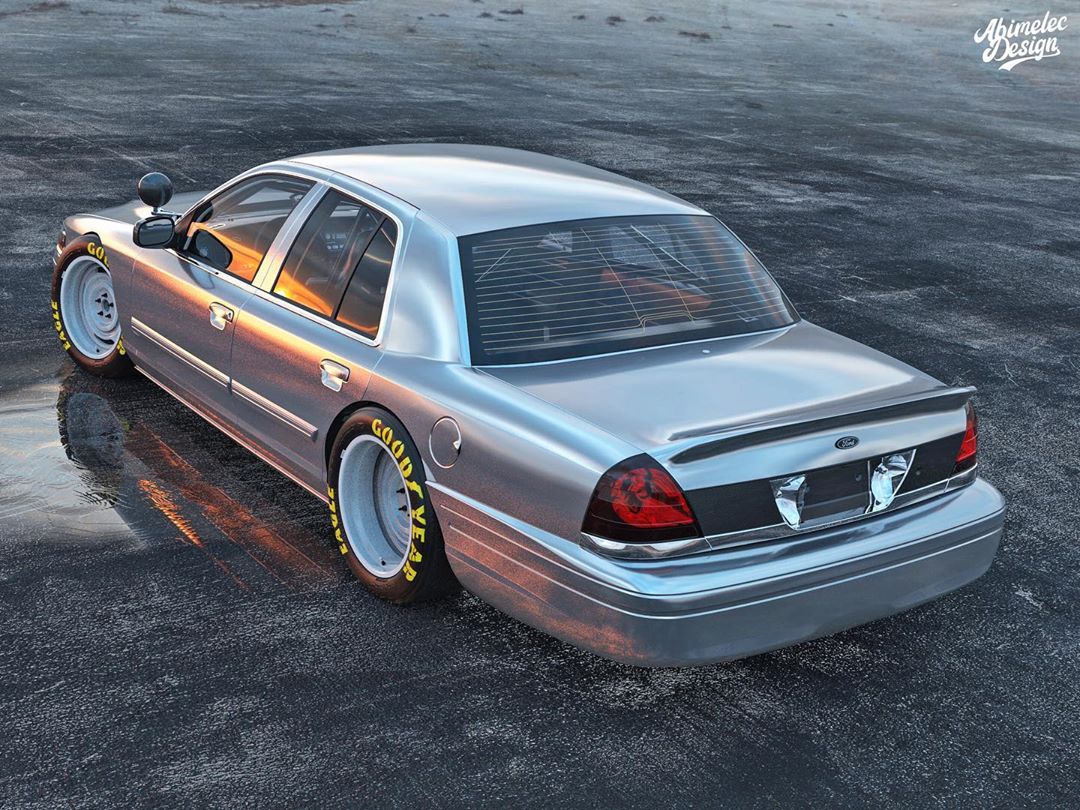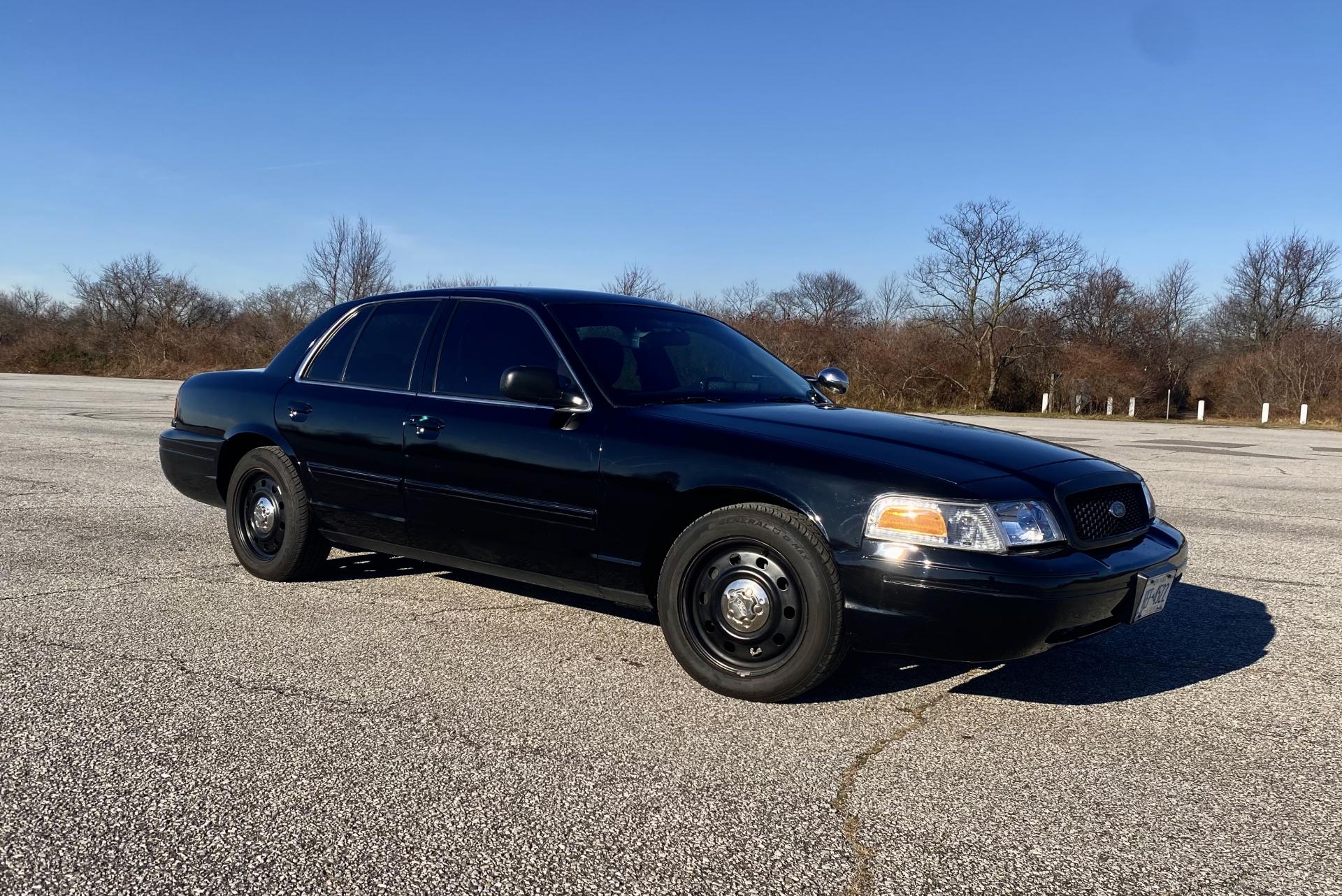

It made 235 hp RPM and 276 lb-ft of torque at 4,000 RPM. The black painted mirror caps were now textured plastic, and the ECM received less aggressive calibration as Ford deemed 1999 P71 models as being too aggressively calibrated.įurther alterations were made in 2001, but most importantly, the CVPI now received the “Performance Improved” 4.6L 2V V8 engine as standard equipment. In comparison, the civilian Crown Victoria uses a 12" torque converter.įor 2000, the rear fascia and taillights lost the chrome trim, and the gloss-black grille was dropped in favor of a flat-black slatted grille. Fleet models equipped with the "Street Appearance Package" retained the amber turn signal until 2004, when all CVs changed to all-red taillights.įor 1999, a heavy duty 11.25" torque converter became standard equipment on all CVPIs.

#FORD CROWN VICTORIA INSTALL#
These chambers were now empty, leaving a perfect place to install in police cars strobe tubes that would not affect brake or turn-signal visibility. They still had the chambers for the separate turn signals that early models had. Although the lenses changed, the housings did not. Starting in mid-1999, the extra bulbs were eliminated and the turn signals returned to the combination of stop/turn setup with red lenses found in many North American cars. Midway through 1999, the taillights were also changed 1998 and early 1999 models had a separate amber turn signal along the bottom edge of each taillight housing. Finally, the new "Street Appearance Package", intended to make the CVPI look like a standard (P73) model, including chrome trimming and Crown Victoria badging, was introduced. A chrome-trimmed gloss-black rear fascia, black door-handle trim, black bumper strips, and a gloss-black slatted grille were also introduced at this time. In 1999, Ford introduced the "Crown Victoria Police Interceptor" name, with a badge on the trunk lid replacing the 1998 "Crown Victoria" badge. The 1998 police package P71 had a chrome grille, chrome door handle trim, chrome bumper strips, and a chrome-trimmed flat-black rear fascia with the "Crown Victoria" badge. Both cars included restyled front and rear end components.
#FORD CROWN VICTORIA LICENSE#
To accommodate the design of the 1995 model's new taillights, the rear license plate was moved from the bumper to the trunk lid.įor 1996, the Crown Victoria badge on the front fenders was removed and the cars received a new steering wheel 1997 models have a lighter blue interior color compared to prior years.įor the 1998 model year, the Ford Motor Company restyled the Crown Victoria, eliminating the "aero" look that the first-generation Crown Victoria had from 1992 to 1997, adopting the more conservative styling of the Mercury Grand Marquis. Another minor restyle followed suit in 1995, with a new grille and taillights. In the 1993 model year, the Crown Victoria was given a chrome front grille and a reflector strip between the taillights. From 1992 to 1997, the police car models of the Crown Victoria (both base and LX trims) were officially known as Crown Victoria P71s.
#FORD CROWN VICTORIA CODE#
Though the name has been officially in use since 1992, the 1979–1991 full-sized LTDs and LTD Crown Victorias used the "P72" production code designation for both fleet and taxi and police models, with the model itself being internally classified as S (similar to LX). Used versions are normally stripped of any police decals, equipment, police radios, and emergency lights before being sold or auctioned to the public.

The CVPI came equipped with many heavy-duty parts, such as a revised transmission, and a 186 kW (253 PS 249 hp) engine. The cars were in demand by taxi companies and others who wanted a safe, durable, and/or inexpensive car, and those who needed a car with a large back seat. Īlthough CVPIs were not sold directly to the general public by the manufacturer, they were widely available in North America as used vehicles after being decommissioned. Rear-wheel drive was deemed better for hard maneuvers and more robust than the front-wheel-drive competition for rough driving over curbs and other obstacles in the urban environment. The body-on-frame construction allowed inexpensive repairs after collisions without the need to straighten the chassis. The conventional rear-wheel drive, V8 power, and body-on-frame construction were considered advantageous for police use. 4 Comparison with standard Crown VictoriaĪfter the discontinuation of the Chevrolet Caprice, the Ford Motor Company held a near-monopoly on the market for police cruisers in the United States and Canada for over a decade.


 0 kommentar(er)
0 kommentar(er)
